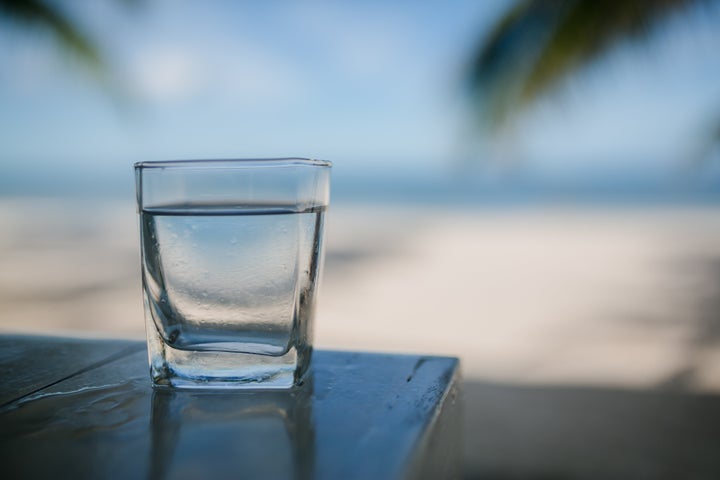
Do you start at your feet and move up? Give it all a quick spray and move on? If you’ve fallen into a routine of using sunscreen each day, you may be surprised to hear that there’s a preferred method for how it should be applied.
Are you doing it the right way? Here’s what the experts say.
Top-down is the preferred method.
Face-first is always the way to go, experts said. “I recommend starting at the face and then working your way down the body to your feet, so that you don’t wind up with bacteria from your body on your face,” said dermatologist Dr. Corey Hartman.
Dermatologist Dr. Teresa Song agreed with this approach, and she explained why it’s a good idea. “Generally, skin care products used on the body are more occlusive, which means they can use heavy, greasy ingredients that create a physical barrier for the skin,” she said. “That heavier body skin care should be separated from products intended for face and neck, since they could potentially cause breakouts on the face.”
Globs or dabs?
“One way to apply your sunscreen is to focus on the cosmetic subunits of the face,” said dermatologist Dr. DiAnne Davis. “If you follow this method, the forehead gets one dot or glob of sunscreen. Each cheek gets another, then the chin area, around the mouth, the nose and finally around the eyes.”
But that’s not the only method. “Alternatively, you could take a glob of product and spread it into both hands by rubbing them together, followed by one large application to the entire face with both hands,” Davis said.
Before or after makeup?
“We always recommend layering products from thinnest to thickest,” said dermatologist Dr. Claire Wolinsky. “If you’re using chemical sunscreen, it should be as close to the skin as possible and preferably the first product applied before moisturiser, then makeup. If you’re using a thin serum like a vitamin C, then the serum would be applied first. But if you’re using mineral sunscreen, that should be the last step so it’s closest to the sun.”
Once the sunscreen goes on, give yourself some time before doing anything else, experts said. “Let sunscreen sit on the skin for at least 10 minutes before applying makeup, just to make sure it fully absorbs,” Hartman said.

Put on enough — and in the right places.
The experts said that the biggest sunscreen mistake they see is people not applying enough. “You need a full ounce of sunscreen to cover your body, which equates to a shot glass or a golf ball-sized amount,” Hartman said.
He noted that while sprays are very easy to use, they need some follow-up before they can provide protection. “Spray multiple passes across each body part, usually two to three times per arm and three to four times per leg,” Hartman said. “Hold the sunscreen nozzle about 3 to 4 inches from your skin. Stop in between sprays and rub the sunscreen into the skin entirely. If you skip this step, the spray will only protect where it hits the skin.”
As you’re paying attention to application, make sure you’re getting even coverage — especially in spots you might otherwise miss. “Many people realise the importance of applying sunscreen to the face, but other areas like the ears, neck and back of the hands also receive a significant amount of UV radiation and are common sites for skin cancer,” said dermatologist and Mohs surgeon Dr. Carolyn Stull. “Applying sunscreen to these areas on a regular basis is important to reduce the risk of UV damage.”
What type is best?
“I recommend a physical or mineral sunscreen that contains zinc oxide as the active ingredient,” said dermatologist Dr. Mojgan Hosseinipour. “Tinted sunscreens contain iron oxides that protect against blue light, infrared and visible light as well. Choose a sunscreen that has an SPF of 30 or higher, is water-resistant, and provides broad-spectrum coverage, which means it protects you from UVA and UVB rays [two types of ultraviolet light].”
If you’re confused about how to read all of this on a label, Song put it this way: “‘SPF’ stands for ‘sun protection factor,’ and ‘PA’ stands for ‘protection of UVA rays.’ An SPF number of 30 and up is recommended, with a PA rating of 4-plus. If you’re wearing SPF 30, it blocks 97% of UVB, whereas SPF 50 blocks 98% of UVB rays. While SPF only measures for UVB protection, PA measures for UVA protection, and more pluses means higher protection.”
Finally, SPF makeup doesn’t make the grade for medical aesthetician Victoria Waked. “Makeup with SPF is not enough coverage,” she said. “People often apply makeup sparingly, focusing on achieving a desired look rather than ensuring even and thorough sun protection. This can result in an insufficient amount of SPF being applied, leading to reduced effectiveness in shielding the skin from UV rays.”
Apply ... and then reapply.
Now that you know which kind of sunscreen to buy and the best way to apply it, make sure you’ve got your timing right, too. First, you need to apply it before those harsh rays hit your delicate flesh. Here’s what Hosseinipour recommended: “Apply sunscreen 15 to 30 minutes before going outdoors. It takes approximately 15 minutes for your skin to absorb the sunscreen and protect you.”
And keep reapplying it as long as you’re in the sun. “If you’re outside for longer than two hours, you need to reapply sunscreen,” Hartman said. “You should also reapply immediately after swimming or sweating. There are amazing products available that make reapplication easy, so find one that you like and stick with it.”